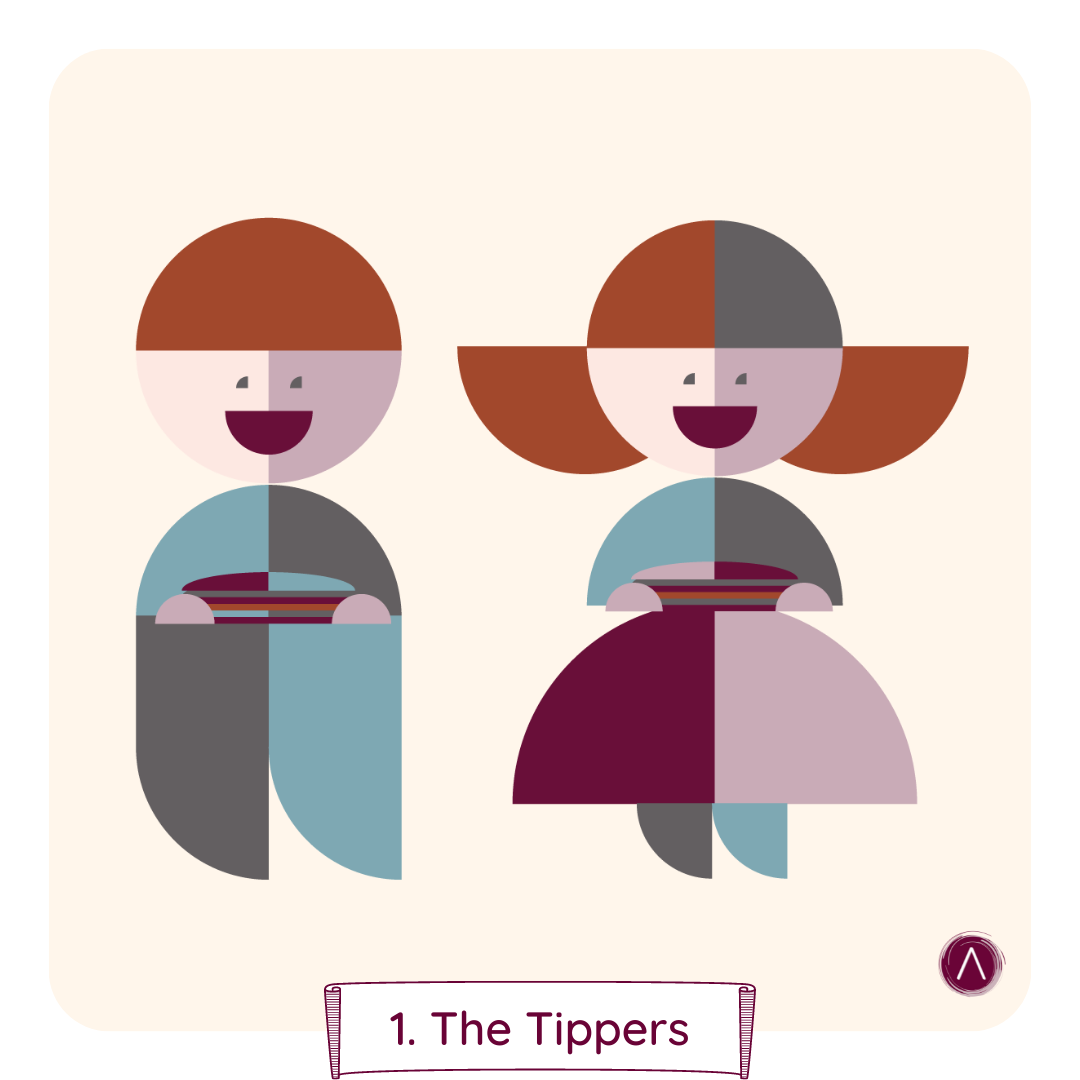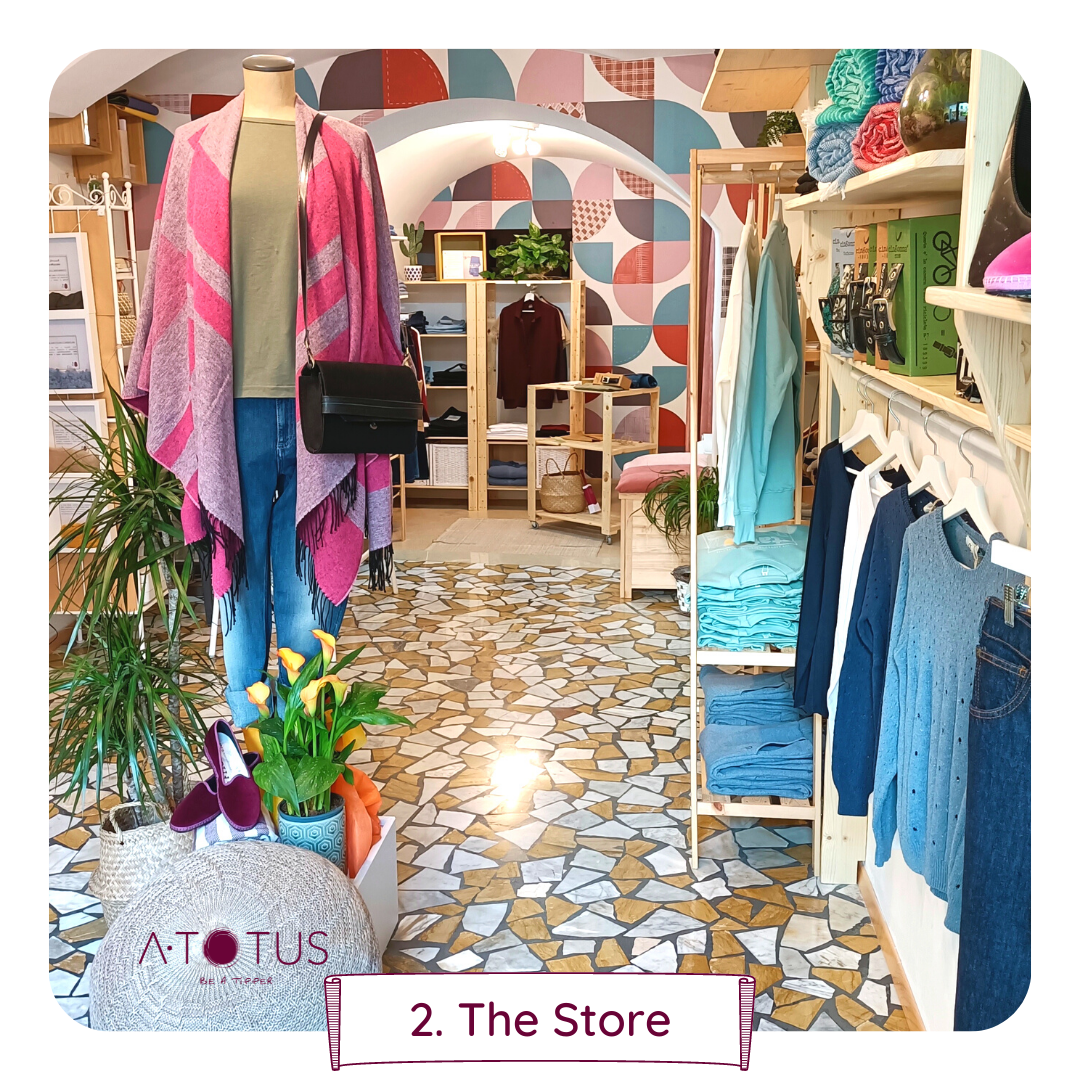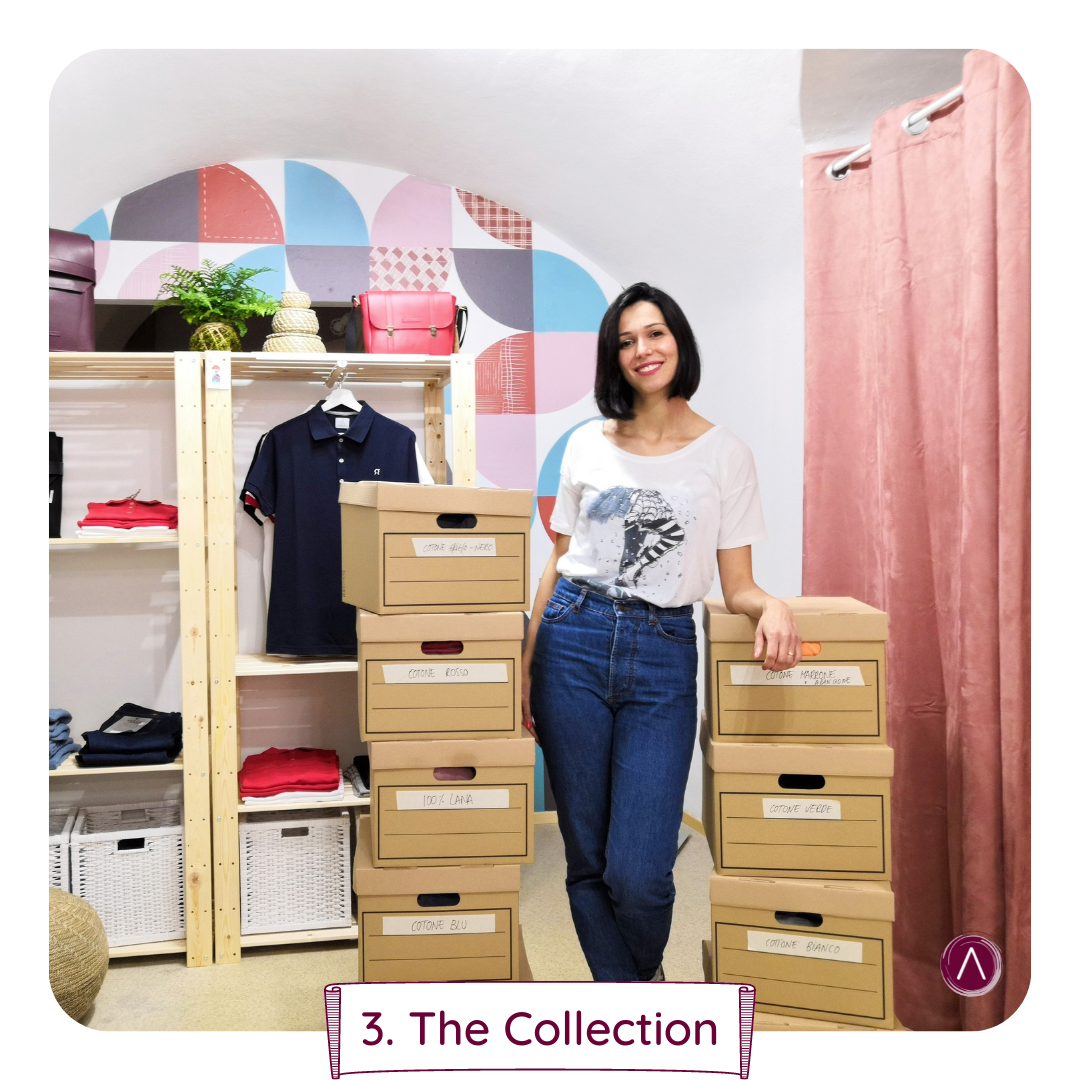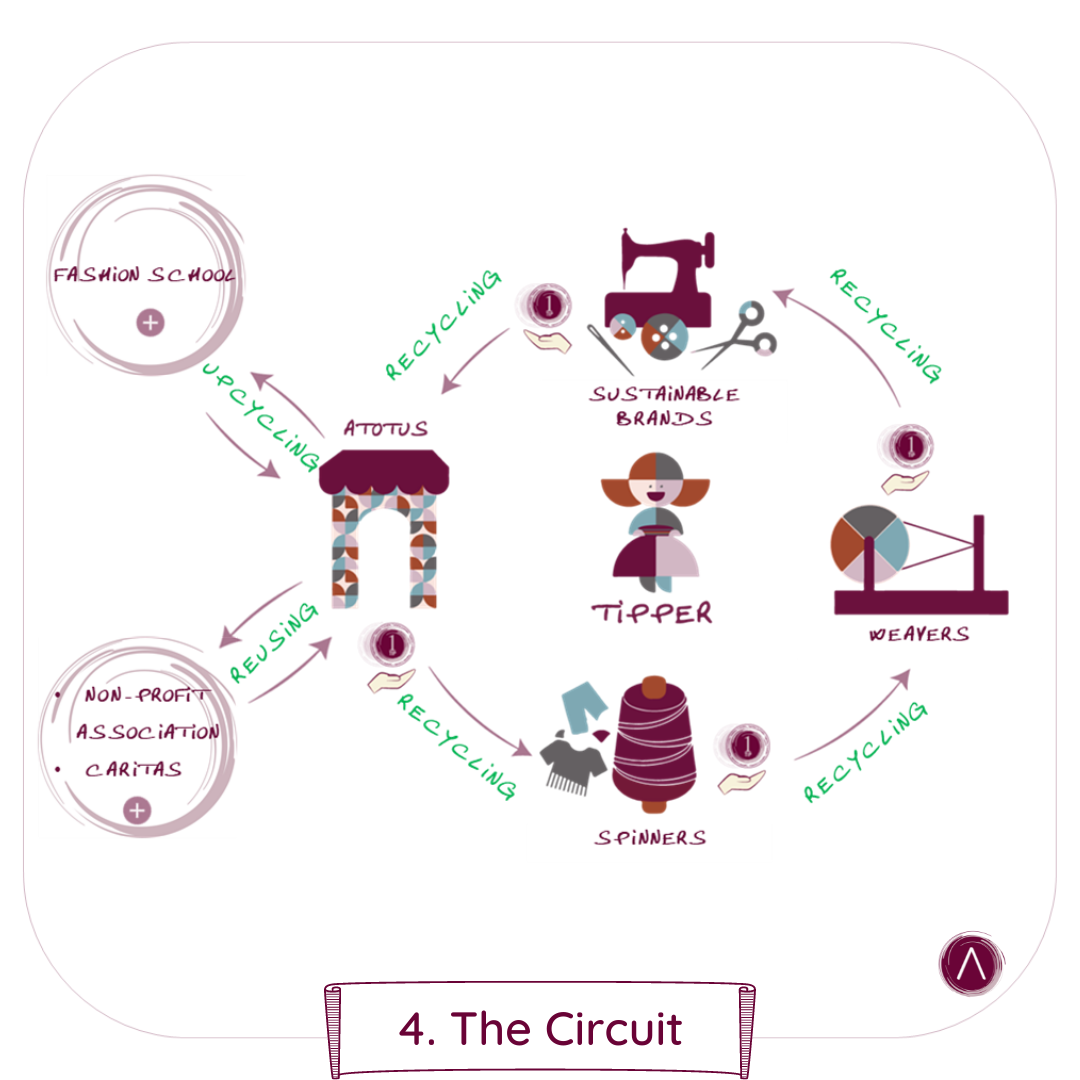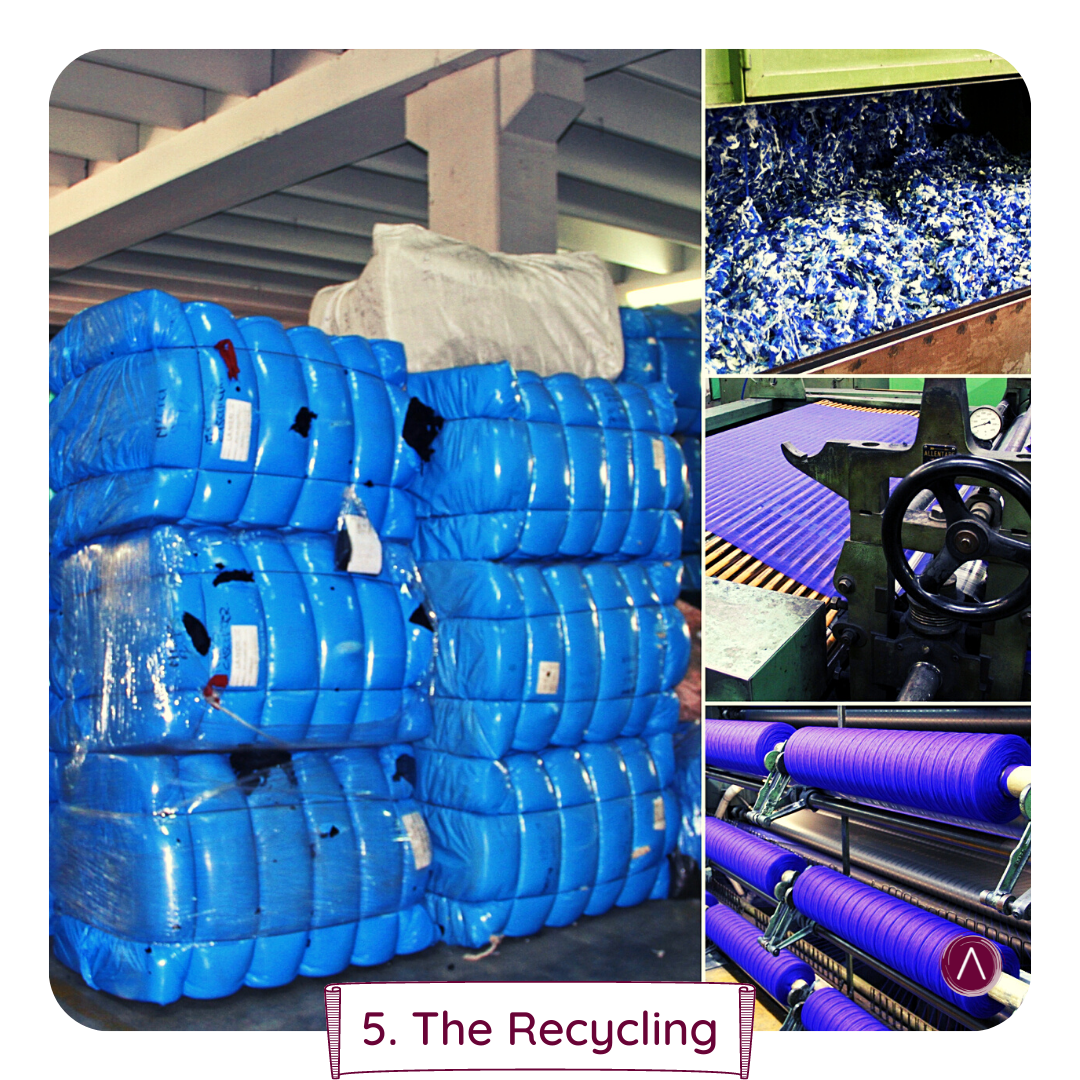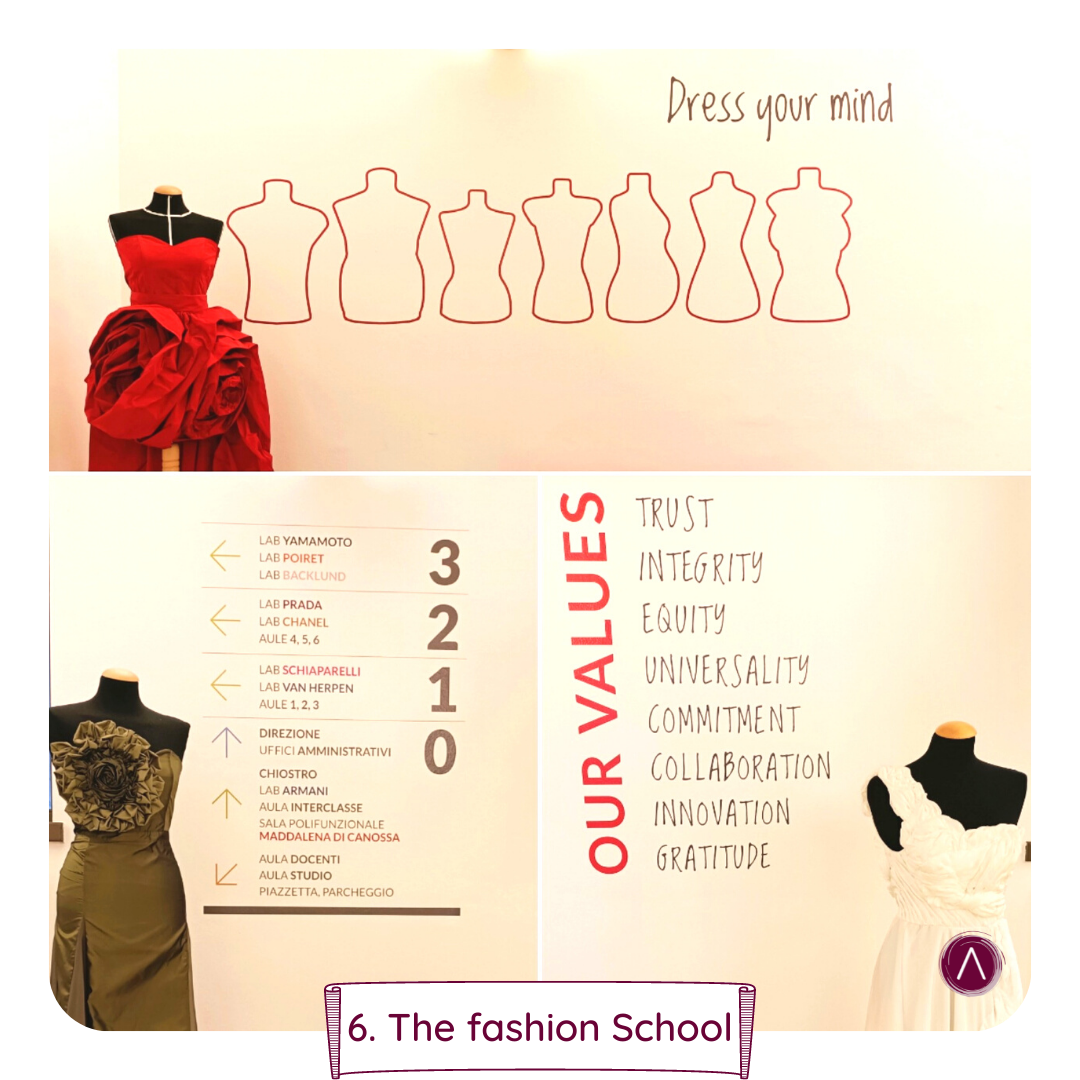Atotus - Be a Tipper
Basic information
Project Title
Full project title
Category
Project Description
Atotus is a circuit that connects the players of the sustainable fashion supply chain in order to extend the lifetime of every single garment and incentive sustainable products. To this aim, we promote conscious consumption and apply the three ways of the circular economy: recycling, upcycling and reuse. The final consumer is the pivot and the driving force of the circuit, which aims to create connections and synergies among people and companies working together to achieve a shared goal.
Geographical Scope
Project Region
Urban or rural issues
Physical or other transformations
EU Programme or fund
Which funds
Description of the project
Summary
Atotus is a circular economy circuit that involves all the players in the fashion supply chain: spinners, weavers, brands, physical and online stores, up to the final consumer, the most important player. The project is based on the four sustainable fashion practices: recycling, upcycling and reusing and buying sustainable. Ten companies from all over Italy have been involved to realize the project; they were selected on the basis of possession of certifications (e.g. GOTS, GRS, etc.) and their commitment towards sustainability.
We then created a technological platform and a virtual currency (named TIP, acronym of Together Is Possible) that acts as a measure of the sustainability of each actor and as an incentive. In this circuit we play the role of connector between the different players in the supply chain and the final consumer in the two moments in which can make the difference: the end of life of its own garments and the purchase of new items of clothing.
We have created a physical shop where we collect recycling selected used garments by the final consumer, that we have named “Tipper”. Tipper means the one who overturn the compulsive way of buying, typical of fast fashion, but also the one who gives a tip (something more). The used garments are collected in exchange for TIPs, usable for the purchase of new and sustainable items of clothing. The collected garments are intended for one of the three ways mentioned above in order to increase the product lifespan. In parallel, the project aims to encourage the purchase of environmental and social sustainable products. The Tipper will in fact be able to purchase, with its own TIPs, the new items of clothing produced by sustainable brands, actors of the circuit, within the Atotus shop, both physical and online.
Key objectives for sustainability
The two principal goals of the project Atotus are the reduction in textile waste and the increasing in responsible consumption of sustainable products. To achieve the first goal, we want to increase the lifespan of textile garments through the three ways of circular economy: recycling, upcycling and reusing. Thanks to the collection system developed, about 800 kilograms of used garments were collected in ten months, which otherwise would become waste, and more than 150 Tippers have been involved.
The recycling of used garments is done thanks to the mechanical recycling process, through which the second raw material is transformed into new yarn. This yarn will then become part of new sustainable products. The upcycling is developed thanks to the collaboration with a Fashion School which, with its students, gives new life to used garments, transforming them into something new and of greater value. The reusing is applied thanks to the collaboration with a charity association, making the garments in good conditions available to people who need them.
Due to virtual coin, the TIP, the project can measure the contribution of each person in reducing waste but, at the same time, incentive the people to achieve the other goal: overturning the compulsive buying driven by fast fashion, increasing the responsible consumption of sustainable products.
Creating an incentive to differentiate its own collection and buying sustainably products have been fundamental in involvement of people. The traceability of their own garments and the understanding of the entire supply chain are a great strength of the project that makes people feel the actors of change.
What differentiates us is to put the two objectives together, encouraging the final consumer to take the last and first steps of a virtuous consumption circle at the same time. Furthermore, doing it by involving all the players in the supply chain, sharing objectives and results, makes sustainability more accessible to everyone
Key objectives for aesthetics and quality
The main goal from an aesthetics point of view is to encourage the craft Made in Italy production that combines sustainability with fashion, giving the right value to the garments quality but also considering beauty and refined design. One common myth of the sustainable fashion world is that beauty and sustainability don’t go hand in hand and the though is that to buy sustainable products to abandon the design and refinement of the garments is necessary. To this target, Atotus has selected the main up-and-coming brands in Italy that aim to create aesthetically beautiful garments complying with the principles of environmental and social sustainability and turning waste into valuable resources.
From a quality experience point of view, the Tipper is actively involved in the project due to his double role, which consists in putting back into circulation the end-of-life garments and in purchasing new sustainable and high-quality clothing. This experience is entirely different that has never been seen in the previous models in Italy, because it represents the starting point of the circular economy system and also the point of a new arrival, due to the purchase of a new product. Feeling an integral part of the project makes the final consumer experience unique and it allows to collect constantly new feedback to improve the aesthetics of sustainable garments.
To achieve the aesthetics goal, we also involved a professional fashion high school to make them know the practice of the upcycling to be able to design new creative clothing from used clothes.
Finally, great importance to aesthetics was given in the creation of the brand, choosing graphics and colours designed to convey lightness, accessibility and joy to bring this world closer to everyone, including people who do not have great spending power or who have no awareness towards the theme of sustainability.
Key objectives for inclusion
Atotus is a term of the Sardinian language that means "to all"; in Atotus name is rooted the principle of "inclusion". The circular economy can exist if all the involved parties play an active role. Industrial players can do a lot, but if the final consumer is not involved and is not encouraged to recycle and to purchase sustainable product, all the efforts in industrial and production level are in vain. The goal of Atotus is to include as many people and companies as possible so that the project can really belong to everyone, creating win-win situations.
Territory is one of the 4 pillars of Atotus (with Circular Economy, Sustainable Fashion and Made in Italy). For this reason, since its inception the project has involved different local entities of the birth place, the region of Trentino Alto-Adige, in order to involve them in project growth. A training course for young people was created with Centro Moda Canossa, a professional school in Trento; the course combines a theoretical part focused on the circular economy and on the recycling materials and methods knowledge, and a practical part focused on the realization of a capsule collection in co-design by applying the upcycling. A parallel circuit has been created with "Centro aiuto alla vita", a charitable association, which provides mothers in difficulty with the not yet end-of-life items of clothing and, in parallel, recycles with us no longer usable garments.
Also, some training courses have been created in two primary schools and in a high school with the aim of teaching the circular economy concepts in textile field and explaining to children all the phases of the project. In this way everyone can be part of it: children, parents and teachers.
Finally, thanks to the TIPs System, we have given the opportunity to save money on buying the new sustainable garments, typically more expensive than a fast fashion garment, rewarding people’s contribution and making sustainable products more accessible to everyone.
Results in relation to category
Atotus was born in May 2021 and it has since then carried out a work of awareness and has done concrete actions on the road of circular economy. In practice, about 800 kilograms of used clothing have been collected which otherwise would have become waste. A portion of these has been recycled by a mechanical procedure to create new sustainable yarn; another portion has been made available to Centro Moda Canossa to create a dedicated training course and a capsule collection using the technique of upcycling. The last portion has been given to the Centro Aiuto alla Vita to support mothers donating them children and maternity clothes not yet end-of-life.
Almost 150 Tippers have been involved in 10 months. They delivered their own used garments to Atotus and earned TIPs, our virtual coin, which allows us also to measure the sustainability of the circuit.
The Tippers have earned about 1500 TIPs in recent months (1 TIP = 1 Euro) and they have spent almost 700 for their purchases of new sustainable items of clothing.
The circuit of TIPs works also B2B among the players of the textile supply chain. In this regard the first complete circle of TIPs was closed by the free delivery of used garments to the spinner who, in turn, has granted a discount to the clothing manufacturer who has purchased the recycled yarn. Finally, Atotus has purchased the finished product with a similar discount to be sold inside the shop.
Another important achievement is the education for sustainability of the Tipper. The people involved make a first selection at home where they check the labels on their clothes. About 95% of the garments delivered are really good for recovery.
More than 300 students have been involved both in Italy and abroad thanks to a partnership with a Dutch Fashion School and more than 3000 people have heard the story of the textile supply chain and the recycling techniques. The project has been the subject of two Bachelor’s thesis on sustainable fashion and circular economy.
How Citizens benefit
The citizens have been mainly involved by a dissemination activity of the project through different channels and by the collection of used garments encouraged by the obtaining of the TIPs coins in exchange. The used garments are not thrown in waste bins as usual, but they are delivered directly to Atotus shop where the composition of the materials and the weight are checked and a specific monetary value is attributed. The awareness that their garments are not waste but second raw material has made the public feel itself as an active part of the project. Furthermore, the knowledge of the different materials certifications has given them more cognition of their purchases.
Civil society has been involved through the creation of a network of collaborators such as every ranking local school, where knowledge of circular economy in the textile field is shared and the opportunity to make concrete action is offered. In recent months the city of Vallelaghi and the Centro Moda Canossa have been involved in the creation of a HUB dedicated to the materials recovery, to the study of eco-design techniques and to the implementation of social inclusion projects that give the opportunity to people in need to make their own contribution to the project and to the community. To realize this project we are searching together funds that allows to create a creative and sustainable hub, giving high value to all the stakeholders involved.
In addition, we have started collaborations with the local charitable organizations like Caritas, which deliver us the end-of-life and no longer useful clothes, reducing textile waste and giving to the garments a new alternative way.
The active involvement of people has not only brought specific benefits but it is the only possible way for the Atotus project to be successful. A circular economy project cannot exist without the contribution of people, regardless of the sector.
Physical or other transformations
Innovative character
Atotus is innovative project firstly because it is the first Italian circuit that connects the total sustainable fashion chain: spinners, weavers, clothing brands, shops, online stores and the final consumer. To date there are some brands that are committed to a sustainable production, also through the creation of small vertical chains, but there is no horizontal circuit that connect all parts sharing the common goal. So far, also the final consumer has been involved in a passive way or one-off without incentives. In this project the Tippers are the ones in the middle of the circuit.
Another innovative and technological aspect of the project is the creation of a virtual coin, named TIP, which acts as a measure of the sustainable actions of each player and as a participation incentive. TIP coin works as a circuit of credit compensation: when the Tipper delivers used garments to the Atotus shop, he receives some TIPs in exchange that are credited to his personal account; later, when the Tipper buys a new sustainable garment in the Atotus shop or online, he may require the use of the TIPs to obtain a discount. In this case the amount of TIPs decreases and the Tipper will have to deliver other used garments to obtain further TIPs. The value of the used garments is calculated in detail, according to the type of material and weight; in this way a just reward is given transparently for the action carried out. The TIP works also B2B and it can complete a full circuit in the form of discounts creating important synergies.
This system therefore allows monitoring and tracking all trades that have taken place within the circuit and to create new partnerships B2B, encouraging the production of recycled garments with advantages also in terms of economy as well as of sustainability.
Learning transferred to other parties
The Atotus project was born with a structure that can be reproduced in other contexts and territories. The collection process and the whole monitoring and management system of TIPs coins have been created to be made them available to other stores, which are the real heart of the project and the first point of contact with the Tippers. One of the future goals is in fact the creation of new franchise stores, which can implement the collection and especially the involvement of people, also in other local contexts.
In order to monitor the system, we have created online counters, which display in real time the kilograms of materials collected; this system and the whole statistic section related to Tippers are reproducible on several collection points.
The results obtained in the region of Trentino Alto-Adige are in fact replicable throughout the national and European territory. By increasing the number of people and territories involved, also the number of players that participate to the circuit can increase. The aim of the project is in fact to encourage the recycling of textile materials and also their use by clothes brands using the creation of real benefits for companies that approach to this world.
The web channel, used both for sale and for collection, is another means employed to reproduce on a large-scale the project that to date has mainly developed at local level. Also, on request by Atotus e-commerce, it is possible to book the collection of used clothes directly at home. In term of transport sustainability, the online channel is a means to create later a capillary local network of collection and sales points with a consolidated format and a technology platform already tested.

